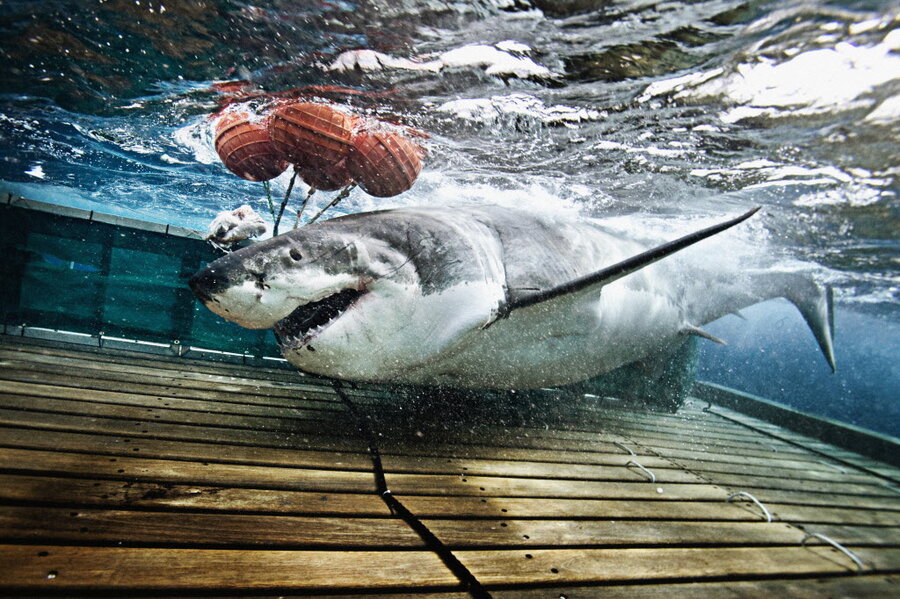Pacifica shark attack: why we don't need to be afraid
Loading...
A shark attacked a kayaker near Pacifica State Beach in Pacifica, Calif., on Tuesday, the latest victim in a rising tally of shark attacks that likely has less to do with burgeoning shark aggression and more to do with more aggressive media coverage of shark incidents.
The victim, Micah Flansburg, was fishing some 100 yards off from the beach at 3:30 p.m. when a Great White shark rose up under the boat and then took it in its teeth. The man was frightened, but unharmed.
"It was intense. It was just like the Discovery Channel where you see the eyes roll to the back of the head and the pink gums and his teeth bared," Mr. Flansburg told ABC.
Shark attack news reached a decade high in 2012, with about 80 unprovoked shark attack reports worldwide, seven of which were fatal. Some eight of those attacks were off the US Pacific coast and another 26 were in Florida, the state that accounts for about half of all shark attacks in the United States, mostly because that state’s appealing beaches are so heavily trafficked. North America as a whole also accounts for about half of all shark attacks worldwide, but researchers are unsure what combination of meteorological, oceanographic, economic, and social factors are to blame for that trend.
Attacks that are considered provoked, such as when a shark attacks someone trying to pet or fish it, are not included in those tallies. Attacks on already drowned humans are also not included.
On the whole, shark attacks have been on an upswing over the last century, but scientists have said that those worrying numbers are largely due to increased efforts to document those incidents. Rates have also climbed as people spend more recreational time in the water, especially so in remote areas where sharks once reigned supreme. Other factors in shark attacks, such as climate change, have not yet been adequately studied to be linked to climbing reports of attack rates.
Some 60 percent of all shark attacks are on surfers, since that category of water users are more likely to be in the surf zone, where sharks sometimes lurk. Surfers are also more likely than swimmers to be kicking up water and alerting sharks to their presence.
In the event of a shark attack, scientists at the Florida Museum of Natural History recommend an aggressive response, like hitting its snout or clawing at its eyes or gills.
But that’s a tip we’re unlikely to ever need to use. The odds of becoming a shark attack victim, based on beach attendance rates in the US, is about one in 11.5 million. The odds of dying in an attack are about 0 in 264.1 million – or, about nil.
For perspective:
Odds of getting crushed by a vending machine are about 1 in 112 million.
Odds of becoming president are 1 in 10 million.
Odds of dating a supermodel are 1 in 88,000.
Odds of finding a pearl in an oyster are 1 in 12,000.
Odds are, these things are more likely to happen to you than a fatal shark attack.
Odds are, though, none of these things will happen to you.








